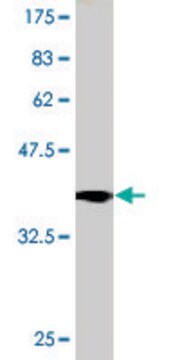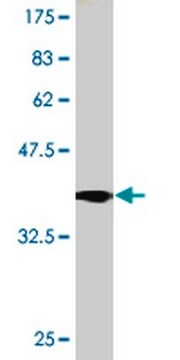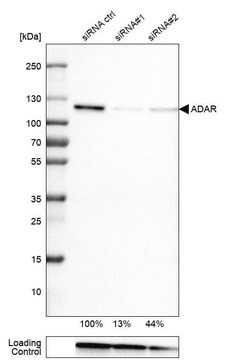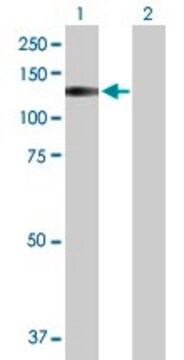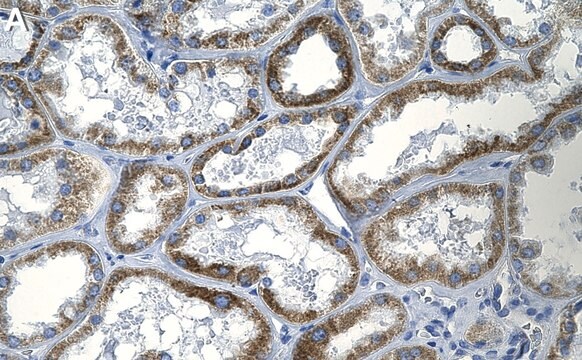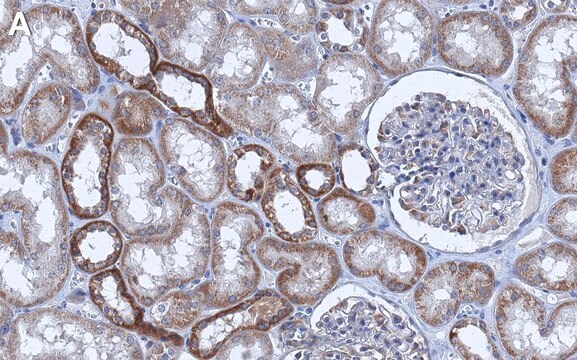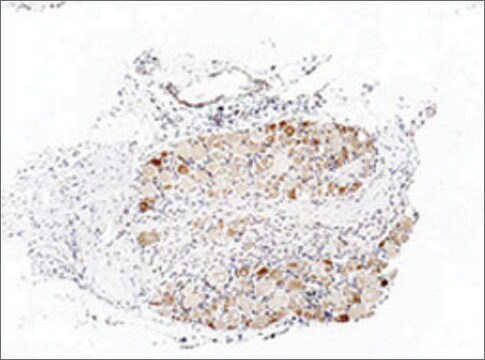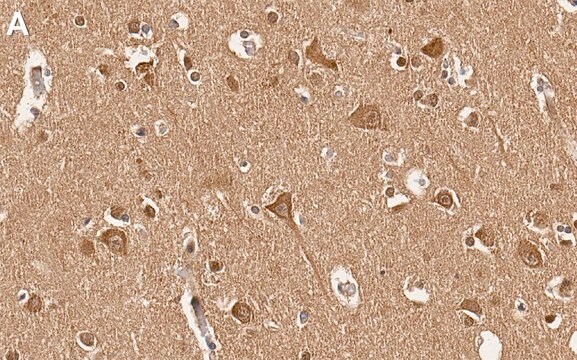General description
We are committed to bringing you greener alternative products, which adhere to one or more of The 12 Principles of Green Chemistry.This antibody is Preservative-free, produced without the harm or sacrifice of animals and exceptionally stable to allow for ambient shipping and storage if needed and thus aligns with "Waste Prevention", "Designing Safer Chemicals" and "Design for Energy Efficiency".
Click here for more information.
ZooMAb® antibodies represent an entirely new generation of recombinant monoclonal antibodies.Each ZooMAb® antibody is manufactured using our proprietary recombinant expression system, purified to homogeneity, and precisely dispensed to produce robust and highly reproducible lot-to-lot consistency. Only top-performing clones are released for use by researchers. Each antibody is validated for high specificity and affinity across multiple applications, including its most commonly used application. ZooMAb® antibodies are reliably available and ready to ship when you need them.
Specificity
Clone 2N14 is a ZooMAb® Rabbit recombinant monoclonal antibody that specifically detects Transient receptor potential cation channel subfamily A member 1 (TRPA1). It targets an epitope within 18 amino acids from the N-terminal, cytoplasmic domain.
Immunogen
KLH-conjugated linear peptide corresponding to 18 amino acids from the N-terminal, cytoplasmic domain of human Transient receptor potential cation channel subfamily A member 1 (TRPA1)
Application
Quality Control Testing
Evaluated by Western Blotting with His-tagged full-length recombinant Human TRPA1 protein.
Western Blotting Analysis (WB): A 1:10,000 dilution of this antibody detected His-tagged recombinant fragment of Human TRPA1 protein.
Tested applications
Enzyme Immunoassay Analysis (ELISA): A representative lot of this antibody detected His-tagged recombinant fragment of TRPA1 in ELISA applications.
Affinity Binding Assay:: A representative lot of this antibody bound TRPA1 peptide with a KD of 1.0 x 10-12 in an affinity binding assay.
Immunocytochemistry Analysis: A 1:100 dilution from a representative lot detected TRPA1 in SH-SY5Y cells.
Note: Actual optimal working dilutions must be determined by end user as specimens, and experimental conditions may vary with the end user
Target description
Transient receptor potential cation channel subfamily A member 1 (UniProt: O75762; also known as Ankyrin-like with transmembrane domains protein 1, Transformation-sensitive protein p120, Wasabi receptor) is encoded by the TRPA1 (also known as ANKTM1) gene (Gene ID: 8989) in human. TRPA1 is a multi-pass membrane protein with four cytoplasmic domains, six transmembrane domains, four cytoplasmic domains, and one pore-forming regions (aa 902-933). It contains 14 N-terminal ankyrin repeats and serves as a receptor-activated non-selective cation channel involved in pain detection and perception of cold, itch, and oxygen concentration perception. It displays about 8-fold greater preference for divalent over monovalent cations. It can be activated at sites of tissue injury or sites of inflammation directly by endogenous mediators or indirectly as a downstream target via signal transduction from a number of distinct GPCRs. One of the specific functions of TRPA1 involves the detection, integration, and initiation of pain signals in the peripheral nervous system. Is activated by a large variety of structurally unrelated electrophilic and non-electrophilic chemical compounds. Electrophilic ligands are reported to activate TRPA1 by interacting with critical N-terminal Cys residues in a covalent manner. Under normoxia, hydroxylation of proline residue in the N-terminal region is required for inhibition of TRPA1 activity. In hypoxic conditions, a decrease in oxygen concentration diminishes the activity of the HIF-prolyl hydroxylase 2 (EGLN1) and relieves TRPA1 inhibition leading to channel activation. However, in oxidation of Cys-633 and Cys-856 in hyperoxia can override the hydroxylase EGLN1-mediated inhibition, causing TRPA1 activation. This ZooMAbZooMAb® recombinant monoclonal antibody, generated by our propriety technology, offers significantly enhanced specificity, affinity, reproducibility, and stability over conventional monoclonals. (Ref.: Miyake, T., et al. (2016). Nat. Commun. 7; Article 12840; Moparthi, L., et al. (2014). Proc. Natl. Acad. Sci. USA. 111(47); 16901-16906).
Physical form
Purified recombinant rabbit monoclonal antibody IgG, lyophilized in PBS, 5% Trehalose, normal appearance a coarse or translucent resin. The PBS/trehalose components in the ZooMAb formulation can have the appearance of a semi-solid (bead like gel) after lyophilization. This is a normal phenomenon. Please follow the recommended reconstitution procedure in the data sheet to dissolve the semi-solid, bead-like, gel-appearing material. The resulting antibody solution is completely stable and functional as proven by full functional testing. Contains no biocide or preservatives, such as azide, or any animal by-products. Larger pack sizes provided as multiples of 25 μL.
Reconstitution
300 μg/mL after reconstitution at 25 μL per vial. Please refer to guidance on suggested starting dilutions and/or titers per application and sample type.
Storage and Stability
Recommend storage of lyophilized product at 2-8°C; Before reconstitution, micro-centrifuge vials briefly to spin down material to bottom of the vial; Reconstitute each vial by adding 25 μL of filtered lab grade water or PBS; Reconstituted antibodies can be stored at 2-8°C, or -20°C for long term storage. Avoid repeated freeze-thaws.
Legal Information
ZooMAb is a registered trademark of Merck KGaA, Darmstadt, Germany
Disclaimer
Unless otherwise stated in our catalog or other company documentation accompanying the product(s), our products are intended for research use only and are not to be used for any other purpose, which includes but is not limited to, unauthorized commercial uses, in vitro diagnostic uses, ex vivo or in vivo therapeutic uses or any type of consumption or application to humans or animals.

